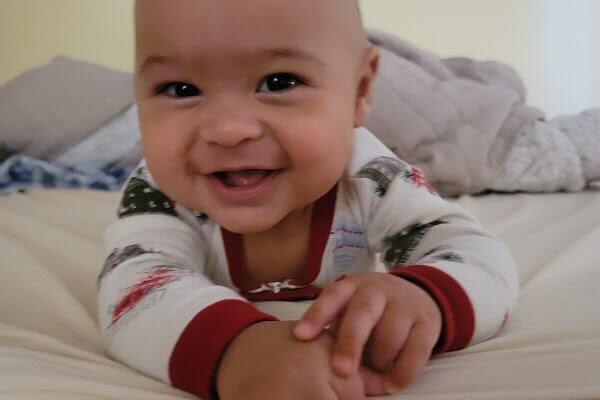How do you help baby sleep? Baby sleep training doesn’t have to be nightmare. In fact, it could be as simple as 1, 2, 3! Yup, this plan really works.
Here’s the three-step plan experts recommend when your baby can’t sleep.
Step 1: Establish a sleep routine
You’ll help baby sleep when she knows what’s going to happen—so have set nap times and bedtimes, ideally based on when your little one already tends to show signs of drowsiness. “Routines are essential at any age as they help prepare our bodies and minds for what comes next,” says Lisa J. Meltzer, PhD, assistant professor of pediatrics and director of the Pediatric Behavioral Sleep Clinic at National Jewish Health in Denver. “A predictable bedtime routine will signal to a baby that sleep time is coming.” Elements of the routine will vary, but a bath, massage, rocking, reading a story or singing a song will all help baby sleep more easily.
Step 2: To help baby sleep, put her down awake
The key to successful baby sleep training is helping your little one learn to fall asleep without any parental involvement (known as “self-soothing”). “A baby who needs parental assistance at bedtime will need that same situation to return to sleep following normal nighttime awakenings,” Meltzer explains. “In other words, if you rock your baby to sleep at bedtime, you may have to rock him or her back to sleep following four to six normal nighttime awakenings.” That’s why it’s so important to make sure baby is drowsy, but still awake, when you put him down.
Step 3: Resist the assist
Oftentimes baby will cry out for you after you leave the room—and how you respond is where the sleep training options and opinions vary the most. Two common methods are known as “controlled comforting” and “camping out.” The first approach allows you to check on and talk to or pat your baby for about a minute at a time (or until your little one settles down), but to gradually increase the amount of time you allow her to cry before doing so (say, two minutes to start, then three, four and so on).
The latter approach is similar in that the child is left to settle alone and is not picked up when he or she cries. However, this technique to help baby sleep is believed to be slightly gentler because the parent or caregiver remains in a nearby bed or chair in the room with the child, gradually decreasing interaction and moving farther away from the baby’s bed until—after one to three weeks—the parent is no longer in the same room.
Eventually, your baby sleep problems should fade away, and she should fall asleep without any assistance (research published in the Journal of Pediatric Psychology found that about 80 percent of babies will naturally start sleeping through the night in about two weeks). She may still wake during the night, and at those times you can still offer some assistance with returning to sleep.
“If you usually rock your baby back to sleep during the night, then go ahead and rock her,” says Jodi A. Mindell, PhD, a clinical psychologist, associate director of the Sleep Center at the Children’s Hospital of Philadelphia and author of Sleeping Through the Night. “If you usually nurse or take her to your bed, then do that.”




